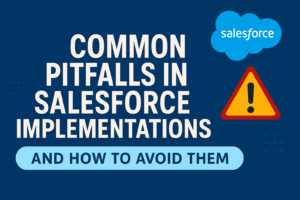BLOG
How to Convert a Curious Researcher into a Paying Customer
We all know at any one point in time, there are millions of people searching, learning and sharing content online.
When prospects are in this ‘early discovery’ phase, their minds are at their most open to connecting and receiving guidance from industry influencers like you!
Here is a sure-fire strategy to catch these curious researchers at the perfect time, bring them into your network of influence, and mould them into prospects that are ready to buy.
Social Media Marketing
The great thing about social media marketing is that you can attract the interested crowd before they even realise they’re interested!
Here are three tips to help you leverage social media to draw in the curious crowd:
Tip 1 – Right message, right platform, right time
Consider your target market, and the best platform to engage them.
Content is king, and context in queen. So make sure you’re putting the right message in front of the right people, on the right platform, at the right time (whoa that’s a lot of things to get right. But don’t worry, we’ve got you covered).
Mindset is everything, when people are hanging out on platforms like Facebook and Twitter, they are typically in a ‘nostalgic’ mindset, looking back on photos, discussing events and news with their friends and families.
This is great news for B2C companies looking to attract curious researchers investigating their lifestyle related product purchases (think kitchens, holidays, events, beauty products/services, cars).
When prospects are viewing content on platforms like LinkedIn, they are in a professional mindset, that’s why businesses that operate in the B2B space typically enjoy a better result from their content marketing efforts there.
Tip 2 – Take control of the conversation by taking them off social media
It’s great to get your micro message in front of your prospects, but in most cases a micro message, means a micro influence.
Use your Twitter! Update or post as bait to get the curious researcher across from social media, to your website. In order for a prospect to get the real answers they need, they know they’re going to need to veer away from the security of social media at some stage anyway.
The key is to not try and answer their question in 140 characters or less, but instead demonstrate that you understand the problem they face and then let their curious nature do the rest.
Here are some fantastic examples of posts that demonstrate the fact that the brand understands the consumer’s problem:

Tip 3 – Sharing is caring
If you haven’t had a major focus on getting your blog content shared on social media before, I’m about to rock your world.
It’s a pretty simple concept to get your head around, people usually like (or hate, but let’s not worry about that one today) people that are similar to them, these similarities include:
- The industries they work in (I have a disturbing percentage of friends involved in the digital marketing/tech/advertising space, are you the same?).
- Their life stage/age/marital status
- Their spending habits/disposable incomes
- Goals and aspirations
All of these attributes can influence what solutions a consumer may seek online, whether for personal or business reasons. If you can get half the job done by getting a curious researcher to your site, the battle is already half won as long as they influence someone on the quest for information.
Having a really well thought out social sharing strategy for your content will help you spread your influence by getting those curious researchers reading more of your content, and going into the top of your sales funnel.
Search Engines
Being found on Google these days largely comes down to producing great content that addresses specific questions that people are asking, and does it well.
Here are is the best way to attract curious researchers to your website and content via the search engines:

Tip 1 – Be genuinely helpful
There is nothing that brings a tear to my eye quicker than a company spending pointless hours pumping out low quality content that isn’t targeting searchers in the right stage of the buying cycle.
Content needs to be developed in a way that addresses specific questions and problems that your consumer is facing at the very start of their journey, before they have engaged a company to help them out (when it can often be too late).
Please, for my sake and yours, don’t try to sell anything when your gentle, curious prospects who are just looking for a little bit of free guidance, begin searching for content online.
Ask yourself, what would I tell my mother if she was thinking about looking into purchasing (insert your product/service here) for the first time.
Tip 2 – Connect your content to your Google+ account
Google wants to deliver its users great content, we all know that, and as you’ve probably read, Google+ Authorship is their way of differentiating between industry experts and industry duds.
If you’re writing content and looking to get it found in the search engines, a great way to make searchers click on your content over someone else’s is to have you Google+ profile connected, this is down to two reasons:
- The more high quality content you write, the more influence Google will deem you to have in your industry which will in turn move you higher up the search engine rankings for your targeted topics.
- Your image will appear next to your blog post, this significantly improves your CTR (click through rate), giving you a nice little boost in traffic to each blog post you write.
Tip 3 – Make your article address a specific problem
Skimming over lots of different topics in a single blog post, is a sure fire way to get ignored by the search engines. Articles that have 1500+ words almost always outperform more shallow explanations on the same topic.
Google loves in-depth, detailed explanations on very specific topics that address exactly what the consumer is searching for. It’s good news for Google because they are providing their searchers with exactly what they’re after and it’s good for you because you are educating/influencing prospective consumers entering your market.
Guest Blogging
Guest blogging is a great way to get your content in front of a ready-made audience of prospects. Here are three tips to should consider when approaching websites requesting a guest blogging opportunity.

Tip 1 – Relevance
There are a number of reasons I have listed this as the first thing to think about when guest blogging, if there is no relevance, there is no point.
Even if there is a large audience, if they are not interested in what you’re writing about, are in the wrong stage of the buying cycle, or can simply not use the information you’re supplying them with, there is simply no point.
From an SEO perspective, if the website you’re blogging for isn’t relevant to your niche, the additional authority gained from the link is going to be limited.
Here is a mini checklist to make sure you’re on point with your outreach:
- Are these customers in an area I can service?
- Do they have the right level of knowledge for the article I’m writing?
- What stage of the buying cycle are these consumers in?
- What is the ideal outcome of me writing this blog post?
- Is it worth it?
Simple stuff, but often overlooked.
Take your time to find a guest blogging opportunity that is the fit for you and your content so you can make best of use of your efforts, the readers time (if you get through) and the editors time.
Tip 2 – Website Traffic Levels
There are so many articles you can produce in a given time period, so you need to ensure that the level of traffic is going to be worth the time it takes to write the article, simply put, is the juice worth the squeeze?
There are tools out there that claim to uncover traffic levels, in my experience I’ve found these to be notoriously unreliable, and more trouble than they’re worth. Generally speaking, page rank and social media interaction is a good indicator of traffic levels.
I use the Page Rank Tracker Google Chrome plugin when skimming over different sites to approach and it seems to work pretty well.
Tip 3 – Other Factors
There are a few other things to consider but are sometimes harder to gauge. Here is a guide to some other important factors to consider when selecting which blogs to approach.
other important factors to consider when selecting which blogs to approach.
Social Media Network
Check to see if these sites have a strong social media following and whether they regularly share their content to their network. This could mean thousands of extra prospects view your content.
Subscriber List
This one can be a little harder to work out, unless of course the site is promoting their high subscriber number to assist them in continuing to grow their list.
Page Rank
A higher page rank will generally give you a bigger boost in the search engines. Use one of the many free page rank checker tools, here is the one that we use: http://www.prchecker.info/check_page_rank.php
Repeat Posts
It is better for your SEO to have a couple of posts on a wide range of different websites, rather than having lots of links all coming from one. If you’ve been blogging a lot on one website, try to mix it up a little.
Summary
I had a lot of fun writing this article. It reminded me why it is that I love digital marketing so much. It is now better for your business than ever before, to be helpful, engaging and have personality!
Let me know what you thought, I always write back!
All the best,
Mike
This article was featured on Social Media Today.











